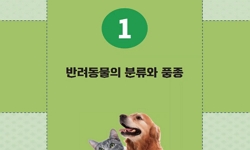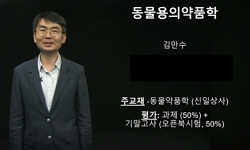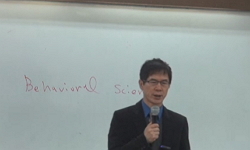To check the linguistic features of the interviews from the humidifier disinfectant victims, the research compared the interviews with the modern spoken corpus and analyzed them in respect of vocabulary and grammar. The results are as follows. First, ...
http://chineseinput.net/에서 pinyin(병음)방식으로 중국어를 변환할 수 있습니다.
변환된 중국어를 복사하여 사용하시면 됩니다.
- 中文 을 입력하시려면 zhongwen을 입력하시고 space를누르시면됩니다.
- 北京 을 입력하시려면 beijing을 입력하시고 space를 누르시면 됩니다.

가습기살균제로 인한 반려동물 피해자 인터뷰 자료의 언어적 특성 = A Study on the Linguistic Features of the Interviewed Materials of the Humidifier Disinfectant Victims
한글로보기https://www.riss.kr/link?id=A107334433
- 저자
- 발행기관
- 학술지명
- 권호사항
-
발행연도
2021
-
작성언어
-
- 주제어
-
KDC
701
-
등재정보
KCI등재
-
자료형태
학술저널
- 발행기관 URL
-
수록면
149-174(26쪽)
-
KCI 피인용횟수
1
- DOI식별코드
- 제공처
-
0
상세조회 -
0
다운로드
부가정보
다국어 초록 (Multilingual Abstract)
To check the linguistic features of the interviews from the humidifier disinfectant victims, the research compared the interviews with the modern spoken corpus and analyzed them in respect of vocabulary and grammar. The results are as follows. First, a common point was deduced by the lexical metaphor that the relationship between the informants and their companion animals, the victims of the case, is as close as a family member. The result is very meaningful, in that it is very rare that the materials of the lexical metaphor provide and predict the relationship between humans and companion animals. Second, the actuality of the semi-formal talk was well revealed by the grammatical feature, in terms of many fragmentary sentences and frequent uses of the ‘-haeyo’ style. However, certain types of conclusive endings such as ‘-keodeunyo’, ‘-jyo’, or ‘-jahnayo’, which are used by the speaker s assumption on the state of hearer s knowledge, were frequently used compared to the modern spoken corpus. The features of these conclusive endings assuming hearer s knowledge and ignorance show that the linguistic materials of informants implicate their intent to inform the society of the case and to get recognition from the society.
목차 (Table of Contents)
- 1. 들어가기 2. 연구 자료 3. 어휘적인 특징 4. 문법적인 특징 5. 결론
- 1. 들어가기 2. 연구 자료 3. 어휘적인 특징 4. 문법적인 특징 5. 결론
참고문헌 (Reference)
1 박재연, "한국어 양태 어미 연구" 태학사 2006
2 김미형, "한국어 구어와 문어의 특징 연구" 한말연구학회 (15) : 23-74, 2004
3 장경우, "한구 아동의 문법 발달에 관한 종단 연구 –16개월에서 48개월 아동의 자연발화를 중심으로-" 숭실대학교 2019
4 사회적참사특별조사위원회, "카드뉴스"
5 가습기살균제참사 온라인 전시관, "참사연표"
6 행정안전부, "주민등록 인구 및 세대현황"
7 한송화, "종결어미 ‘-거든(요)’의 의미와 기능 연구" 한국문법교육학회 26 : 287-323, 2016
8 최수정, "종결어미 {-지}의 인식 양태 의미 연구" 한국언어문화학회 (55) : 279-314, 2014
9 권연진, "인지언어학에서 은유의 보편성과 상대성" 한국문화사 2017
10 정희자, "은유의 해석에 대하여" 19 (19): 85-111, 1998
1 박재연, "한국어 양태 어미 연구" 태학사 2006
2 김미형, "한국어 구어와 문어의 특징 연구" 한말연구학회 (15) : 23-74, 2004
3 장경우, "한구 아동의 문법 발달에 관한 종단 연구 –16개월에서 48개월 아동의 자연발화를 중심으로-" 숭실대학교 2019
4 사회적참사특별조사위원회, "카드뉴스"
5 가습기살균제참사 온라인 전시관, "참사연표"
6 행정안전부, "주민등록 인구 및 세대현황"
7 한송화, "종결어미 ‘-거든(요)’의 의미와 기능 연구" 한국문법교육학회 26 : 287-323, 2016
8 최수정, "종결어미 {-지}의 인식 양태 의미 연구" 한국언어문화학회 (55) : 279-314, 2014
9 권연진, "인지언어학에서 은유의 보편성과 상대성" 한국문화사 2017
10 정희자, "은유의 해석에 대하여" 19 (19): 85-111, 1998
11 김욱동, "은유와 환유" 민음사 1999
12 국립국어원, "언어정보나눔터"
13 이해영, "구어의 특징과 구조" 국립국어원 16 (16): 161-173, 2006
14 이용숙, "가족으로서의 반려동물의 의미와 반려동물로 인한 구별 짓기" 한국문화인류학회 50 (50): 337-403, 2017
15 사회적참사특별조사위원회, "가습기살균제 참사 피해 기록, 우리 곁에서 일어나고 있는 일"
16 구본관, "≪한국어 문법 총론≫ I" 집문당 2017
17 Lakoff, G., "More than Cool Reason: A Field Guide to Poetic Metaphor" The University of Chicago Press 1989
18 Kövecses, Z., "Metaphor. A Practical Introduction" Oxford University press 2010
19 Tennen, D., "Literacy, Language and learning: The nature and consequences of reading and writing" Cambridge University Press 124-147, 1985
동일학술지(권/호) 다른 논문
-
한국어 화행 연구 동향 분석 : 국내 학위 논문을 중심으로
- 한국사회언어학회
- 신승윤(Shin, Seungyoon)
- 2021
- KCI등재
-
차별.혐오 담화에 대한 사회인지적 고찰 : 반려견 안전관리 대책안 공표에 따른 대형견에 대한 인식을 중심으로
- 한국사회언어학회
- 신유리(Shin, Yuri)
- 2021
- KCI등재
-
Some Uses of Oral Reading in EFL Classroom Interaction
- 한국사회언어학회
- Jae-Eun Park
- 2021
- KCI등재
-
2015 개정 중학교 영어 교과서의 문화 교육 양상 분석
- 한국사회언어학회
- 표시연(Pyo, SiYeon)
- 2021
- KCI등재
분석정보
인용정보 인용지수 설명보기
학술지 이력
| 연월일 | 이력구분 | 이력상세 | 등재구분 |
|---|---|---|---|
| 2027 | 평가예정 | 재인증평가 신청대상 (재인증) | |
| 2021-01-01 | 평가 | 등재학술지 유지 (재인증) |  |
| 2018-01-01 | 평가 | 등재학술지 유지 (등재유지) |  |
| 2015-01-01 | 평가 | 등재학술지 유지 (등재유지) |  |
| 2012-06-04 | 학술지명변경 | 외국어명 : The Linguistic Journal of Korea -> The Sociolinguistic Journal of Korea |  |
| 2011-01-01 | 평가 | 등재학술지 유지 (등재유지) |  |
| 2009-01-01 | 평가 | 등재학술지 유지 (등재유지) |  |
| 2006-01-01 | 평가 | 등재학술지 선정 (등재후보2차) |  |
| 2005-01-01 | 평가 | 등재후보 1차 PASS (등재후보1차) |  |
| 2003-01-01 | 평가 | 등재후보학술지 선정 (신규평가) |  |
학술지 인용정보
| 기준연도 | WOS-KCI 통합IF(2년) | KCIF(2년) | KCIF(3년) |
|---|---|---|---|
| 2016 | 0.46 | 0.46 | 0.5 |
| KCIF(4년) | KCIF(5년) | 중심성지수(3년) | 즉시성지수 |
| 0.56 | 0.51 | 0.724 | 0.17 |





 스콜라
스콜라






